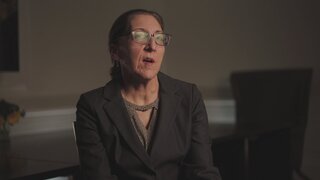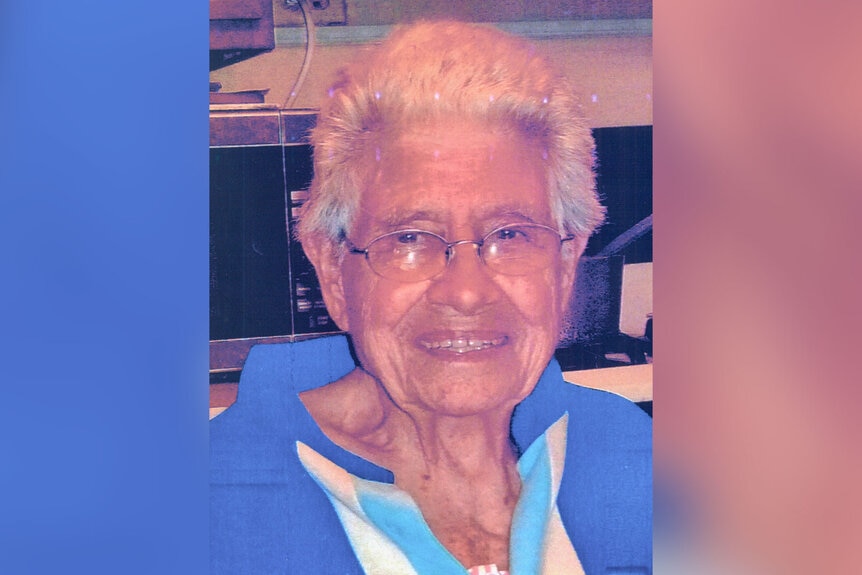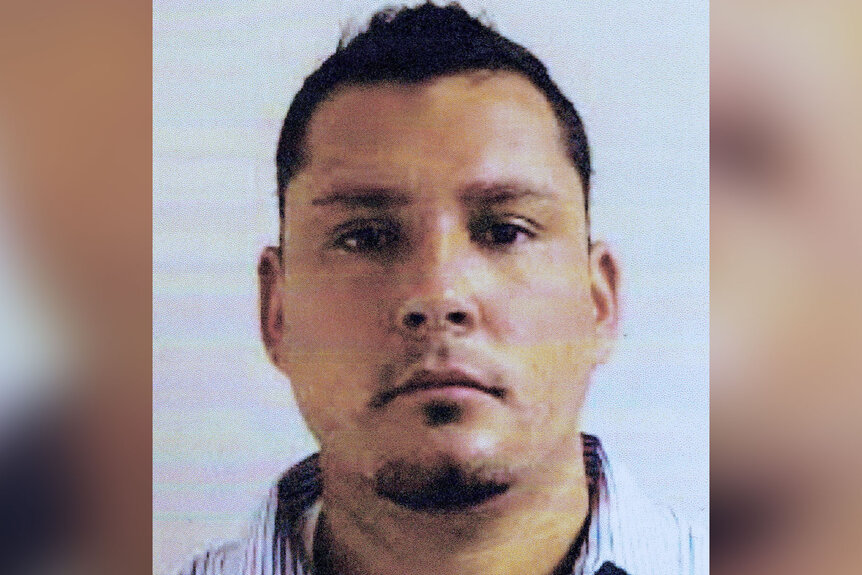Create a free profile to get unlimited access to exclusive videos, breaking news, sweepstakes, and more!
Medical Tech Injected Himself With Patient Syringes Before Surgery, Causing Hepatitis C Outbreak
Throughout his career, medical technician David Kwiatkowski exposed at least 6,000 patients to hepatitis C, and at least 45 of them were determined to have been infected, causing the largest outbreak in the U.S.
In 2009, Lucy Starry, an otherwise healthy 89-year-old mother of four, began developing shortness of breath. It was determined she had aortic stenosis, a heart condition in which the aortic valve narrows and reduces blood flow to the body.
Doctors recommended she have the heart valve replaced, and that September, she was admitted to Johns Hopkins Hospital in Maryland. In preparation for her open-heart surgery, she underwent a routine procedure to have a stent placed in her coronary artery at the cardiac catheterization lab.
Starry made it through the procedure — and the surgery itself — well, and doctors said the valve would last up to 10 years.
“She felt good. She felt like she could take on the world like she used to,” one of her daughters, Mary Lou Bly, told “License to Kill,” airing Saturdays at 6/5c on Oxygen.
Eight weeks later, however, when Starry was back home in Elmira, New York and attending follow-up visits with her local cardiologist, doctors found that she had elevated liver enzymes. Additional lab work was requested, and the results revealed that Starry tested positive for hepatitis C, a virus affecting the liver that can be transmitted through blood or bodily fluids.
At the time, there were no affective treatments available to stop the virus, and to hepatitis C patients, a diagnosis was like receiving a potential death sentence. Starry’s health soon began to decline, and she developed fatigue, swollen legs, and an inflamed liver.
“I couldn’t just believe that the test came back positive … Where did she get this? How did she get this?” Bly told producers. “I felt immediately that it had to have something to do with the valve replacement because there was no way to just contract this without somebody involved or contamination somewhere.”
As Starry’s family grappled with the diagnosis, doctors at Exeter Hospital in New Hampshire made a surprising and inexplicable discovery of their own. In May 2012, three patients who had undergone routine surgeries had suddenly tested positive for hepatitis C. After testing the hospital employees, another positive result came in, bringing the total number of infected to four.
Deputy State Epidemiologist Dr. Elizabeth Talbot, who was working on disease surveillance and control for the New Hampshire Department of Health and Human Services, received a report of the four cases. After going through the patient charts, she discovered that the common thread between the cases was the hospital’s cardiac catheterization lab.
The three patients had their procedures there, and the hospital employee, David Kwiatkowski, worked there.
“The first thing we wanted to know was, do these people have the same source? We can find out whether these patients are linked by matching their viruses,” Dr. Talbot told “License to Kill.”
By analyzing the virus, they found that a single genotype was common to all the infected patients, which meant that one person had infected the entire group. Whether through an IV or a syringe, the blood had come from the same source.
“There were no other infected health care workers that were part of this cluster except David Kwiatkowski,” Dr. Talbot told producers.
Speaking with Kwiatkowski’s colleagues, they learned that the medical technician, who assisted doctors and nurses with procedures inside the cardiac catheterization lab, seemed “altered” and unwell at work, sometimes sweating profusely.
Witnesses also reported seeing what looked like needle marks and abscesses on Kwiatkowski’s arms. During multiple procedures, the abscesses bled through his scrubs, and he was asked to leave the lab to tend to the wounds.
“He told his colleagues that he had cancer for which he needed to have repeated injections. Taken together with the fact that he seemed altered sometimes at work, I’m not sure people believed that,” Dr. Talbot said.
Investigators suspected Kwiatkowski might have been struggling with addiction, and when they learned that a syringe with a blue label reading Fentanyl had been found in a public bathroom near the cardiac catheterization lab, it raised another red flag.
Fentanyl, a powerful synthetic opioid, and Versed, a sedative, are two drugs used during lab procedures, and both medications were kept in a Pyxis machine, an automated medication cabinet that requires fingerprint verification to access.
“David Kwiatkowski did not have direct access, but the room is very dark during the procedures. He would have the opportunity to quickly take custody of that medication without anybody seeing him,” Exeter Police Chief Stephan Poulin told producers. “But if he takes the syringe off of the table, breaks scrub, and uses the bathroom, then applying the drug into himself, how does he get the syringe back?”
Hoping to answer that very question, authorities brought Kwiatkowski in for questioning on June 13, 2012, during which he claimed he had not been previously diagnosed with hepatitis C and that he was also a victim of the outbreak.
When asked about his odd behavior and potential drug diversion, Kwiatkowski maintained he had health issues, including cancer, and denied any involvement in stealing drugs or passing on hepatitis C to patients.
“We [then] started systematically going back several months at a time to do testing for people who had procedures with David Kwiatkowski present, and we started to see positive results for hepatitis C virus,” Dr. Talbot told producers.
Authorities tested more than 1,200 people who might have been at risk, and 32 Exeter Hospital patients were found to be positive for Kwiatkowski’s strain of hepatitis C.
Digging deeper into his background, investigators learned that Kwiatkowski had worked as a medical technician in 16 hospitals throughout seven states over a period of nine years. At the University of Pittsburgh Medical Center in 2008, he had been caught lifting his shirt to hide a Fentanyl syringe in his scrubs. Kwiatkowski, however, denied that he had stolen the medication, and when he left that employment, he was able to work in other hospitals without consequence.
In another incident, Kwiatkowski was found unresponsive in the bathroom of an Arizona hospital. An empty Fentanyl syringe was floating in the toilet, and when authorities walked in to try to help him, he flushed the evidence. Once again, he avoided further investigation.
Authorities also learned that Kwiatkowski had been diagnosed with hepatitis C in 2010, meaning he knew he had been infected for at least two years.
"Over several months, we tested all the people who were under his care in all of these hospitals,” Dr. Talbot said.
Kwiatkowski had exposed at least 6,000 people over the course of his career, and at least 45 patients were determined to have been infected with the strain genetically linked to his body, including Starry, who ultimately passed away at age 94. It was the largest hepatitis C outbreak in the U.S.
Investigators, however, still lacked enough physical evidence to arrest Kwiatkowski in connection with the case, and while he had stopped working at Exeter Hospital, they grew concerned he would continue to infect other patients.
On July 12, 2012, law enforcement received information Kwiatkowski had attempted to harm himself while staying at a hotel in Boxborough, Massachusetts. He was transported to a local hospital, and authorities obtained a search warrant for his car, which had been parked at the hotel lot.
Inside, they found an empty syringe with a blue label that said Fentanyl, much like the ones used at Exeter Hospital.
“The syringe is so important in that this is the tool that’s being used to infect others, potentially, and if we can tie that to David and the cath lab, that is the smoking gun,” Chief Poulin said.
Kwiatkowski’s DNA was located on the syringe, and a week later, he was arrested while still admitted at the hospital. He admitted that he had been diverting drugs across the country and that he was responsible for stealing Fentanyl.
Kwiatkowski said that during procedure setup, he would inject himself with the Fentanyl-filled syringe and then refill the same syringe with saline when no one was looking.
“When the patient was getting injected with what they thought was Fentanyl, they were actually getting saline that was tainted with Mr. Kwiatkowski’s blood,” U.S. Assistant Attorney John Farley told “License to Kill.”
Speaking with the infected patients, some told authorities that their procedures had been the most painful of their lives.
Dubbed a “serial infector,” Kwiatkowski was charged with seven counts of obtaining controlled substances by fraud and seven counts of tampering with consumer product, according to “License to Kill.” With each count carrying a 10-year penalty, prosecutors negotiated a plea agreement with his attorneys.
“[H]e agreed to not only plead guilty to all of these charges, but to two charges that were brought by the United States Attorney’s Office in Kansas related to the death of [another patient, Eleanor] Murphy,” Farley told producers.
In December 2013, he was sentenced to 39 years in prison. The following year, legislation was passed in New Hampshire to create the first board of registration for medical technicians in the nation. Now, state hospitals can communicate with each other about employee disciplinary records.
To learn more about the case, watch “License to Kill” now on Oxygen.com.























